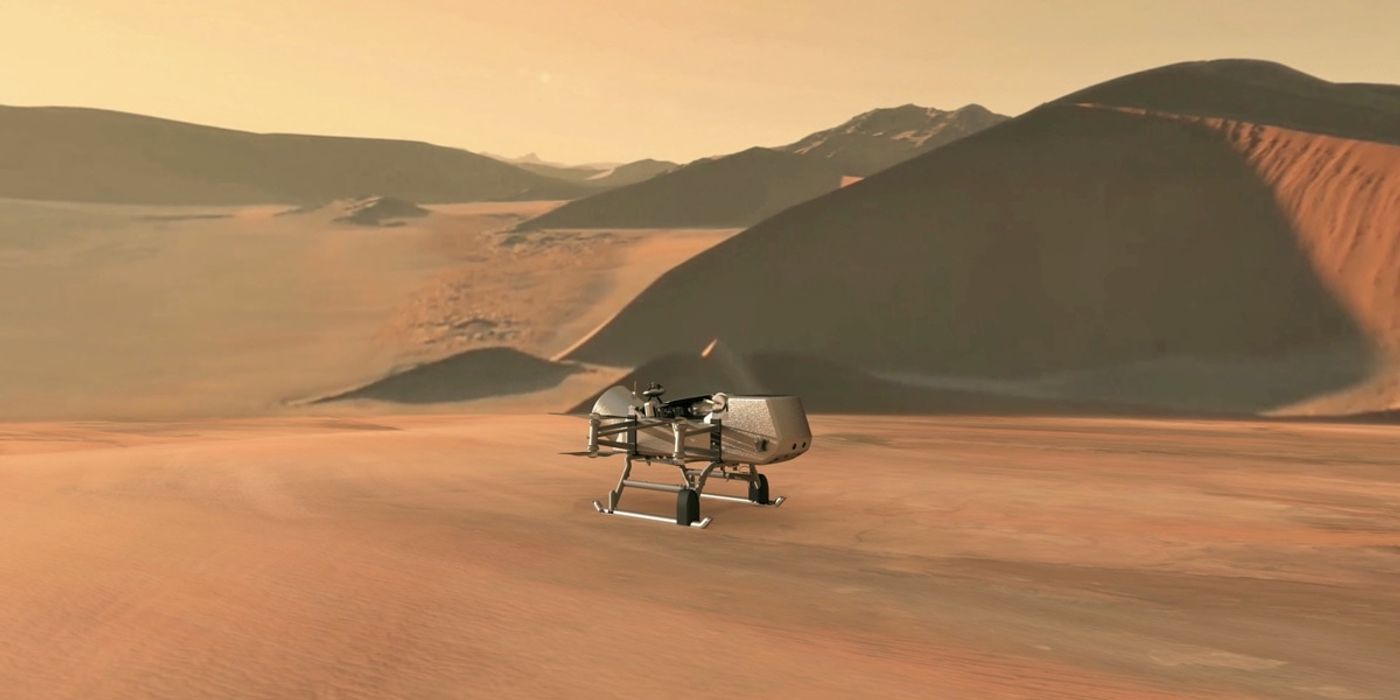NASA Will Send a Drone to Titan in Search of Alien Life
Researchers have been teasing the concept of sending a life-sniffing drone to Saturn’s moon Titan for what seems like forever, and now, it appears that this is finally going to happen.
Citing a public statement released just this past week by NASA, the American space agency announced its plans to move forward with project ‘Dragonfly,’ a mission that would ultimately fly an autonomous miniature helicopter around at various sites on Titan in an effort to study the world’s habitability and search for traces of alien life.
Image Credit: NASA/JHU-APL
Titan has long captivated the minds of astronomers and planetary scientists alike because, like Earth, it harbors a particularly dense nitrogen-based atmosphere with heavy traces of methane gas; moreover, Titan is believed to harbor surface oceans. The thick atmosphere there would make flying something like Dragonfly possible, and upon making its many stops, it could grab surface samples and snap all sorts of pictures.
Related: Does Titan have the right chemistry to support alien life?
No one knows what project Dragonfly might find on Titan when it arrives, and for what it’s worth, it will still be a while before we find out. According to NASA, the mission won’t launch until 2026, and based on the time it takes to get a spacecraft to the Saturnine system from Earth, the mission wouldn’t arrive at Titan until 2034 – a solid 15 years from now.
“With the Dragonfly mission, NASA will once again do what no one else can do,” NASA’s Jim Bridenstine said in the statement. “Visiting this mysterious ocean world could revolutionize what we know about life in the universe. This cutting-edge mission would have been unthinkable even just a few years ago, but we’re now ready for Dragonfly’s amazing flight.”
It's worth noting that Dragonfly is poised to become the first multi-rotor vehicle to visit another world in our solar system, and NASA expects that the mission will last at least 2.7 years, if not longer. The drone would use its onboard instruments to analyze various elements of the distant world, including crater floors, vast sand dunes, and much more.
Related: Titan experiences dust storms much like Earth and Mars do
“Titan is unlike any other place in the solar system, and Dragonfly is like no other mission,” added Thomas Zurbuchen, NASA’s associate administrator for Science. “It’s remarkable to think of this rotorcraft flying miles and miles across the organic sand dunes of Saturn’s largest moon, exploring the processes that shape this extraordinary environment. Dragonfly will visit a world filled with a wide variety of organic compounds, which are the building blocks of life and could teach us about the origin of life itself.”
Without a shadow of a doubt, the Dragonfly mission holds significant potential to tell us about Titan’s habitability and whether life can exist elsewhere in the solar system. Assuming planetary scientists are right, then Titan just might have what it takes to pull this off. It should be interesting to see what it finds.
Source: NASA









